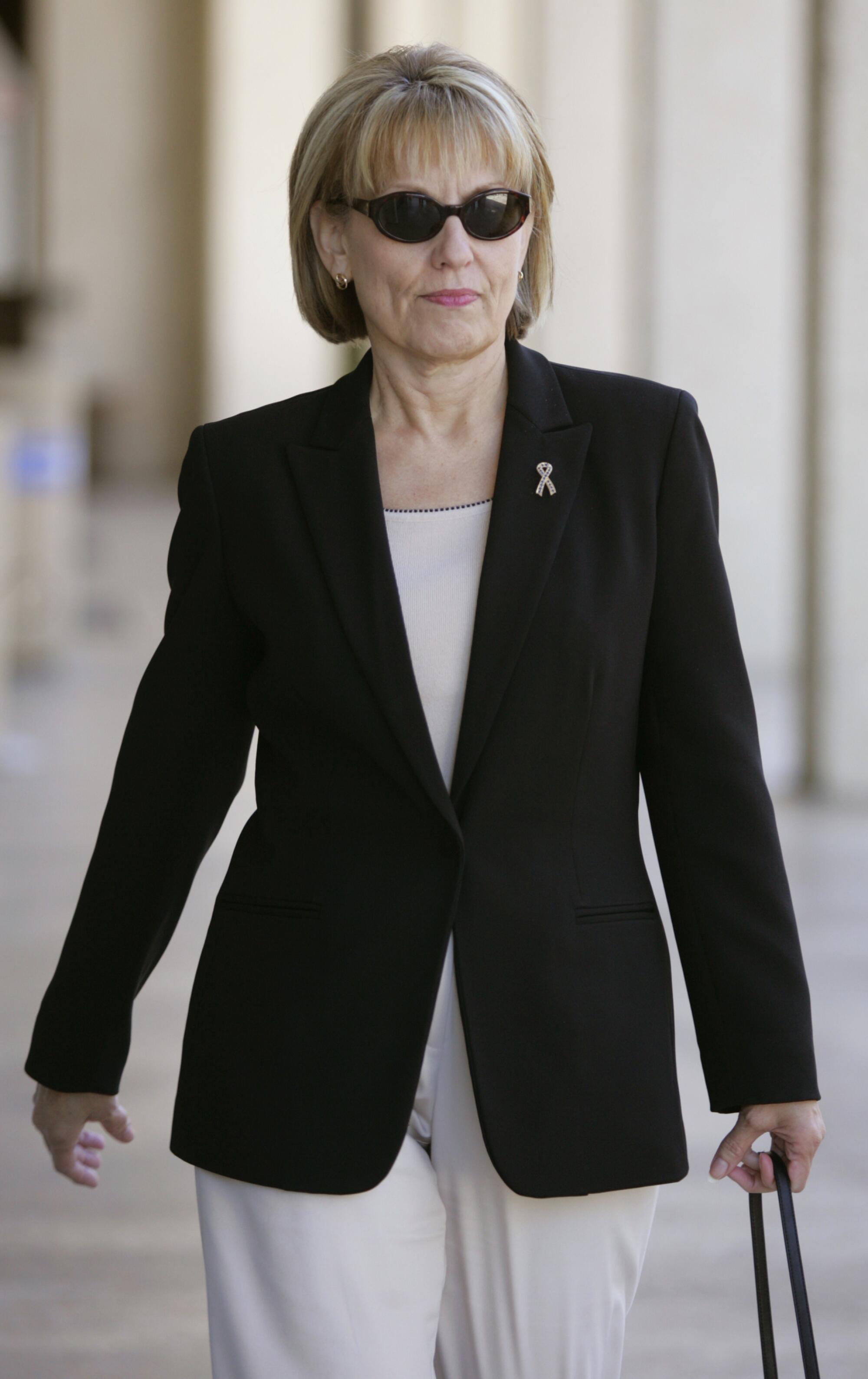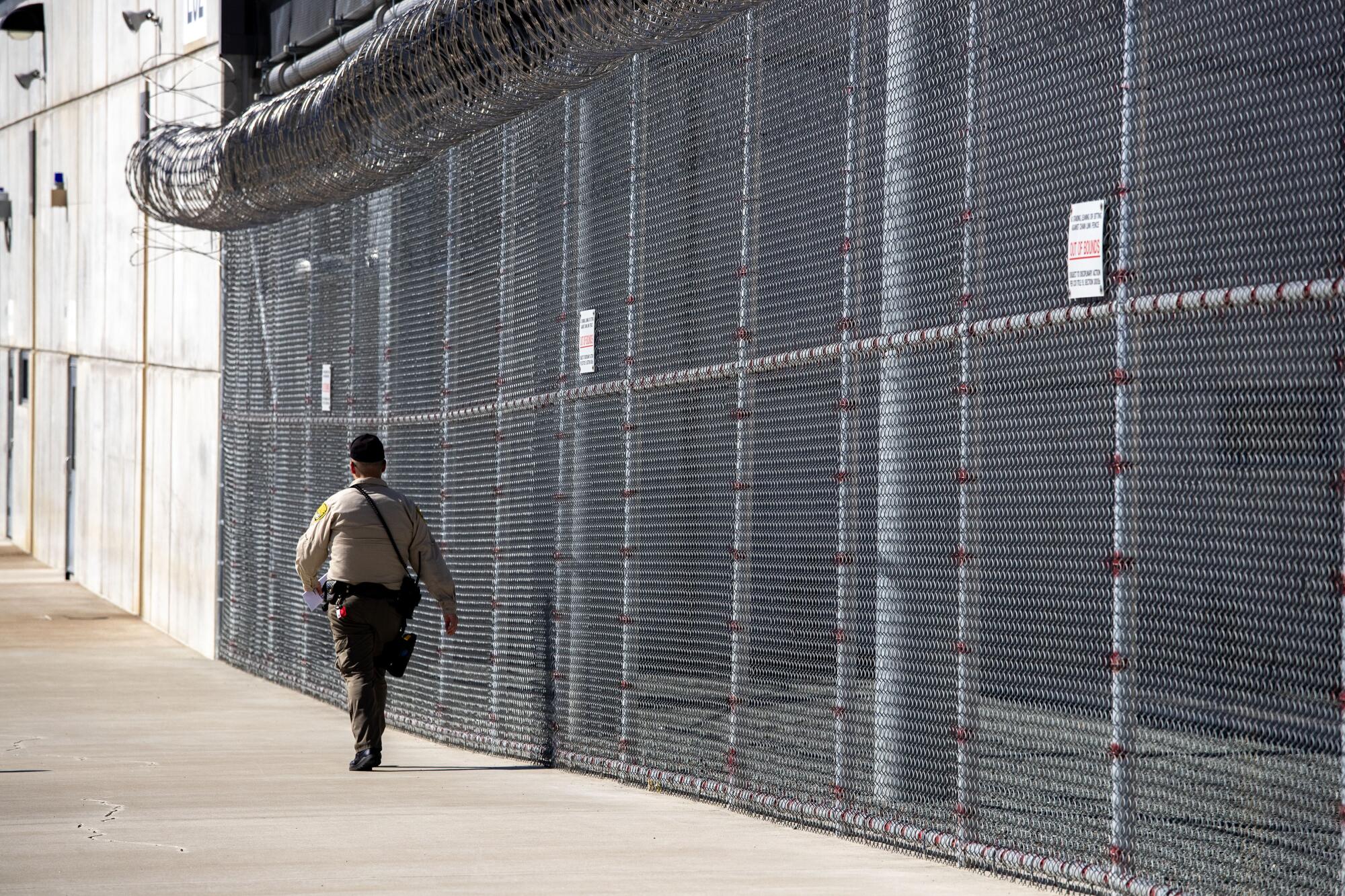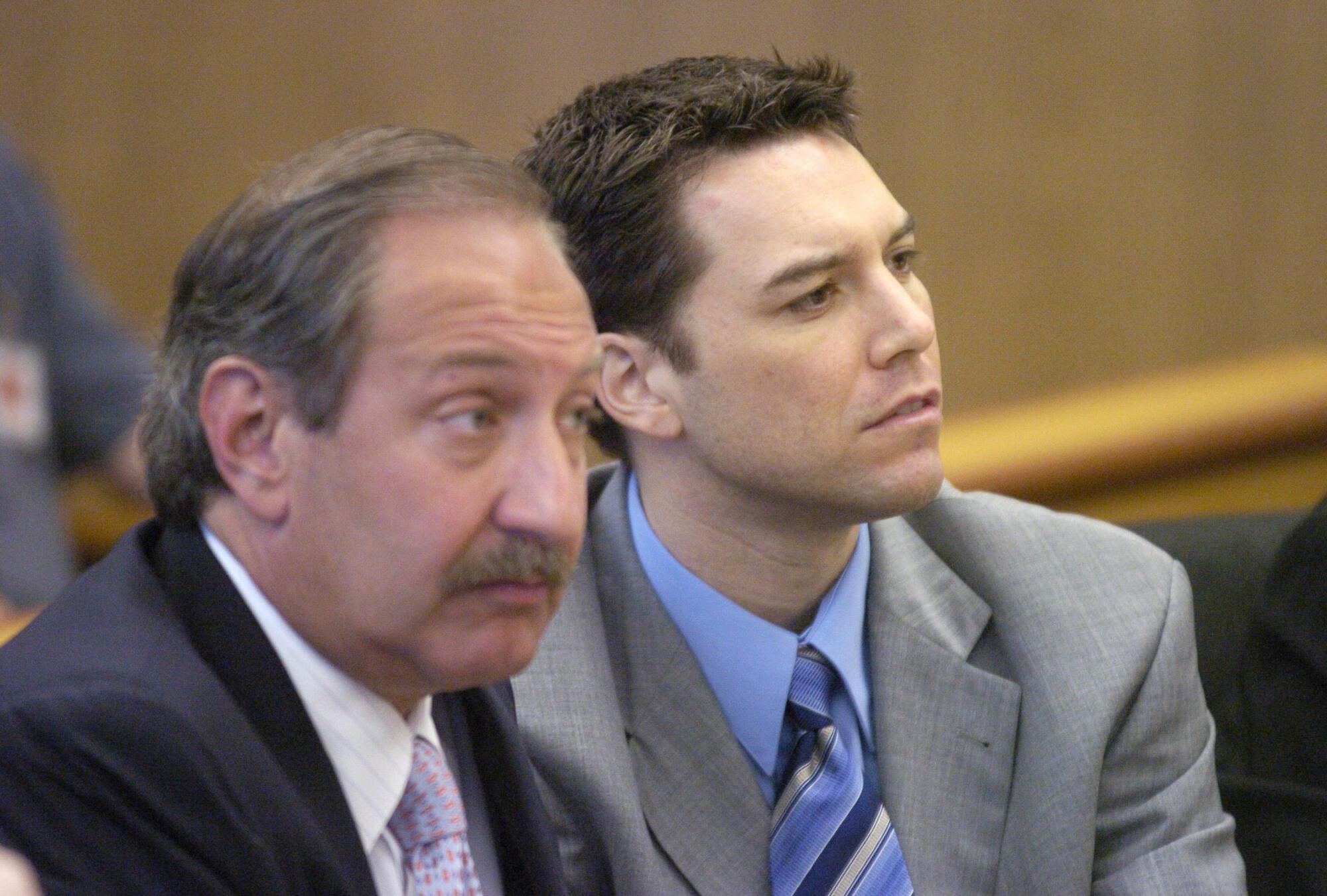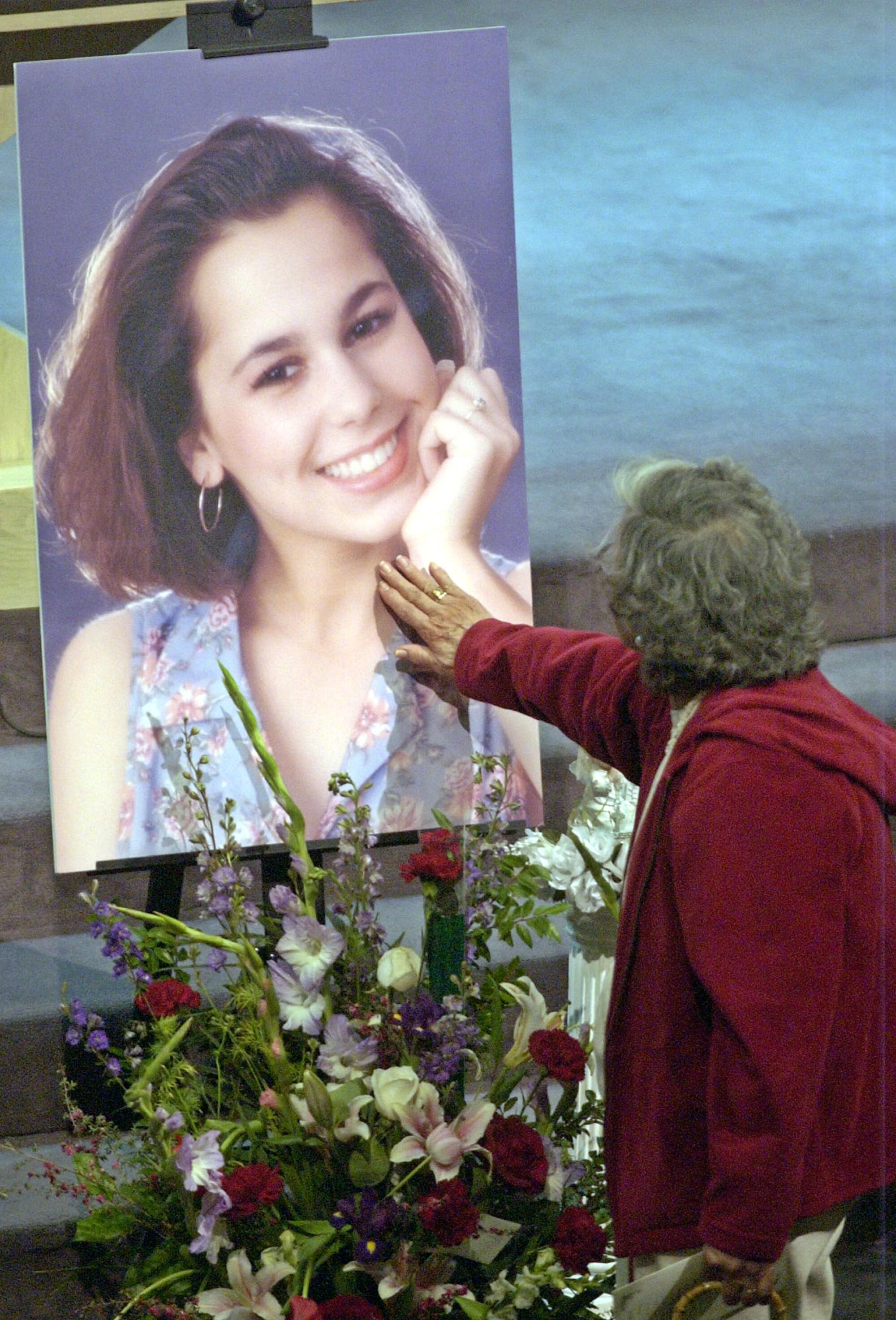For the true-crime-loving public, the Innocence Project and Scott Peterson occupy opposite ends of the moral spectrum.
The project helps free the wrongly convicted, while Peterson is a philandering Modesto fertilizer salesman convicted two decades ago of murdering his pregnant wife and the child she carried at Christmastime.
Which is why one could almost sense the heads of criminal justice aficionados spinning a year and a half ago when an affiliate of the Innocence Project based at Cal State Los Angeles agreed to represent Peterson.
That disconnect has only deepened in recent months. The organization asserted in court filings this spring that it had turned up proof of Peterson’s innocence, including a bombshell analysis by a Harvard Medical School professor.
“This new evidence undermines the prosecution’s entire circumstantial case against [Peterson] and shows that the jury relied on false evidence, including false scientific evidence, to convict him,” a lawyer for the Los Angeles Innocence Project wrote in an April habeas corpus petition seeking to vacate his conviction.
The efforts by the small nonprofit, founded three years ago and currently employing a single full-time attorney, have cracked open a story that seems an artifact of the pre-smartphone era when society’s attention was not yet fractured and the search for a pretty young woman could captivate the nation. From 2002, when Laci Peterson vanished from her home, to 2004, when a jury sentenced her husband to death, news outlets from the National Enquirer to “Good Morning America” breathlessly covered every twist and turn.
At least part of the story’s mass appeal was the almost comically damning circumstantial evidence pointing to Scott Peterson. The bodies of mother and child, a boy to be named Conner, washed up separately about four months after her disappearance on the shores of the San Francisco Bay, a location 90 miles from the couple’s home, but within eyeshot of the waters where Peterson made an impromptu Christmas Eve fishing trip.
January 2003 photo of Amber Frey confirming at a news conference that she had an intimate romantic relationship with Scott Peterson.
(Bart Ah You/Associated Press)
There was also his affair with a Fresno massage therapist named Amber Frey. He told her two weeks before Laci went missing that he had “lost” his wife and was preparing for his first holiday alone.
And as police searched for Laci, Peterson took steps suggesting he knew she was not coming back — trading in her Land Rover for a pickup truck, planning the sale of their home and furnishings, remaking the nursery as a storage area and adding sexually explicit channels to their cable lineup.
“The evidence of his guilt was compelling and undeniable,” prosecutors wrote in a filing last year opposing an L.A. Innocence Project request for additional DNA testing.
To fend off Peterson’s ongoing attempts at freedom, the Stanislaus County district attorney’s office has called two of the original prosecutors out of retirement. Laci’s mother, a steadfast presence in the front row of the 2004 trial, also has returned to the courtroom. At a hearing in San Mateo Superior Court last summer, Sharon Rocha bemoaned her son-in-law’s continued legal maneuvers, asking the judge, “When will this end?”
The California Supreme Court examined Peterson’s case in 2020 in an initial appeal of his conviction. Though there were no eyewitnesses to the murders and no sign of the victims’ blood in Peterson’s fishing boat or family home, the high court found “considerable” circumstantial evidence to support his conviction.

June 2004 photo of Sharon Rocha, mother of murder victim Laci Peterson, leaving the San Mateo County Superior Courthouse in Redwood City.
(Kimberly White / Pool)
The justices reversed his death sentence because of the manner in which the trial judge dismissed potential jurors who said on a questionnaire that they opposed capital punishment. The court ruled that the judge should have pressed them on whether they could set aside their views rather than removing them automatically. Prosecutors opted not to retry the penalty phase, saying they wanted to spare the victims’ relatives more protracted proceedings. Peterson was sentenced to life without the possibility of parole in 2021.
A lawyer who had worked on a previous Peterson appeal approached the L.A. Innocence Project for help in 2023, the year after it opened its doors. The founding director, Paula Mitchell, a veteran of Loyola Law School’s well-respected innocence program, had access to federal grant money for DNA testing in potential wrongful conviction cases, and the appellate lawyer was looking for a way to cover the analysis of a potential piece of evidence — a mattress pulled from a van torched in a Modesto alley the day after Laci was reported missing.
Prosecutors had long maintained the vehicle was unrelated to the murders, and previous testing of the mattress fabric detected only male DNA. But Mitchell agreed to look into the case. Before long, she had thrown her young organization into a wholesale reexamination of the Peterson saga. With assistance from several other lawyers then working for the project, she rented an Airbnb in Modesto, reviewed 40,000 pages of case records and interviewed more than 100 witnesses in what she wrote in a court filing was “an effort to learn the truth about what happened to Laci and Conner.”

September 2023 photo of a guard walking inside the perimeter of Mule Creek State Prison in Ione, Calif.
(Brian van der Brug / Los Angeles Times)
From his cell at Mule Creek State Prison, Peterson, now 52, praised the work of the Innocence Project, telling The Times, “They are selfless and take on what others will not to try to make things right for everyone in our society.”
Peterson appears to be an active participant in his defense. In a 126-page declaration filed by the L.A. Innocence Project this spring, he gave an almost moment-by-moment account of how he became convinced Modesto police were railroading him. He also apologized for his affair.
“I do not have an acceptable explanation for my infidelity or the lies I told to Amber Frey,” he wrote, adding that he would live with the shame for the rest of his life. “All of that being said, I was in no way responsible for Laci’s disappearance or her death or that of our son, Conner.”
***
Taking on a well-known client such as Peterson in a prosecution obsessively scrutinized by the national media departs from the typical work of the national Innocence Project. Founded in New York in 1992 by attorneys Barry Scheck and Peter Neufeld — later part of the O.J. Simpson defense team — the organization set out to reexamine cases where the then-new tool of DNA testing might clear or implicate a suspect.
Its success spawned the Innocence Network, a coalition of about 70 nonprofits across the nation and in other countries. Members such as the L.A. Innocence Project (LAIP) must get approval to belong, but they run their own affairs and choose cases independently.
The demand for their work vastly outstrips the supply. In California, for example, thousands of prisoners every year seek representation from a handful of nonprofits and a circle of private lawyers who do exoneration cases for free.
“People’s families call us. Inmates write to us. We get text messages, phone calls, emails, letters,” said one of the private attorneys, Deirdre O’Connor, who has a policy of making potential clients take polygraph examinations. “I’ve had people who have been after me for years, trying to get me to look at their case.”
Most trying to establish their innocence are “Black, brown gang members from Los Angeles or some other city,” said Ellen Eggers, a retired state public defender who has helped free eight men from prison since 2011. “You come from a poor neighborhood. You have no resources. You had a public defender or a court-appointed attorney.”

July 2004 photo of attorney Mark Geragos, left, and Scott Peterson listening to the judge during Peterson’s trial in Redwood City, Calif.
(Al Golub / Pool)
Few seeking help enjoyed Peterson’s advantages in the courtroom. His La Jolla family hired Mark Geragos, one of the country’s most prominent criminal lawyers, to lead a defense team that cost, according to Geragos, “a seven-figure sum, at least.” Cliff Gardner, a renowned California post-conviction lawyer, handled his appeal.
For some dedicated to exoneration work, LAIP’s decision to take Peterson’s case was baffling.
“It’s not anything that I would ever do,” Eggers said of representing Peterson. She said she did not know the facts of the case, but was reluctant to “prioritize the people that are white and wealthy and have had lots and lots of bites at the apple with the most expensive attorneys that money can buy.”
The public backlash against LAIP representing Peterson was so pronounced that other Innocence Network organizations with no involvement in the case received angry messages.
“One donor who I really trust really was concerned about this being problematic for the movement as a whole,” said Jasmin Harris, the director of development and policy at The Innocence Center in San Diego. She said she understood the worry, but “if an innocence organization believes in someone’s innocence enough to agree to take the case, that is all that should matter.”
Mitchell, LAIP’s only full-time attorney, declined to be interviewed. The group’s board chair, nonprofit executive John Sonego, acknowledged in an interview that “there are thousands of cases that need representation,” but he insisted Peterson’s case was worthy.
“We’re advocates for truth and justice. It doesn’t matter who the defendant is or how controversial the case,” he said, adding that Peterson’s profile might end up helping more typical defendants by putting a spotlight on problems common to other cases.
His lawyers argue that the district attorney’s office in Modesto and the local police rushed to judgment and disregarded or destroyed evidence implicating other suspects. They’ve pointed to another case in which two Peterson prosecutors, Birgit Fladager and David Harris, were accused of framing a local lawyer and others for murder. A jury acquitted the lawyer, and in April, Stanislaus County agreed to settle a malicious prosecution lawsuit for $22.5 million.
Fladager and Harris declined to be interviewed. The district attorney’s office has rejected criticism of the Peterson investigation, saying the evidence against him was “overwhelming.”
The L.A. Innocence Project, which had an annual budget of about $700,000 in 2023, represents four other clients, but none of their cases are currently in court. Peterson is “one of the primary focuses” of the organization’s resources, Sonego said. Federal DNA testing grants cover some of the work, though the LAIP declined to say how much it has put toward Peterson. Other funding has come from members of the public with a particular interest in Peterson.
“There has been some great support that has been given to us because of this case specifically,” he said, adding that those donations pale in comparison with philanthropic grants and other types of contributions.
One revenue stream the organization has opted not to pursue is a behind-the-scenes documentary, though not for a lack of interest. Producers have inundated LAIP with requests, but Sonego said Mitchell and the board have declined them all.
***

May 2003 photo of a mourner touching a picture of Laci Peterson during the memorial service for Laci and Conner, the son she carried, in Modesto.
(Debbie Noda / Associated Press)
Laci Peterson, 27 and about eight months pregnant, was last seen on the evening of Dec. 23, 2002, when she and Peterson, then 30, visited the hair salon where her sister worked. The following evening, according to trial testimony, he phoned her mother and said that he had returned home to find her “missing.”
The truth, prosecutors told the jury, was that Peterson had killed her that morning or the previous night. They said he put her body in a recently purchased boat, drove an hour and a half to the Berkeley Marina, motored into the bay and dumped her body in the frigid waters.
The motive, they said, was his extramarital relationship with Frey, a single mother who thought Peterson was single and looking for a committed relationship. Within a few weeks of embarking on the affair, Peterson was online researching currents in the bay and searching for boats to buy.
To re-investigate the case, the L.A. Innocence Project’s lawyers pored over evidence collected 22 years ago. Prosecutors told the jury Peterson secretly bought a 14-foot Gamefisher for the express purpose of disposing of his wife’s body.
LAIP zeroed in on notes found in the Petersons’ home that seemed to document calls to two marine supply companies to price anchors. The group asked a handwriting analyst to compare the notes to shopping lists recovered from Laci’s purse. The analyst concluded that Laci “probably wrote” the notes about anchors while Peterson “probably did not,” according to the April filing seeking a new trial.
“This new evidence shows that Laci knew about the boat; it shows the falsity of the prosecution’s narrative,” Mitchell added.
Prosecutors have not yet responded in court to LAIP’s assertions about the boat and did not answer a question submitted by The Times.
The most significant development by far in LAIP’s re-investigation came from a phone call to a Harvard radiology professor named Peter Doubilet. A fetal biometrics expert who normally spends his days interpreting obstetrical ultrasounds, he had not followed the Peterson case closely.
He had a high regard for the Innocence Project, though, and after talking to Mitchell, he agreed to review the scientific evidence about the timing of Conner’s death.
His remains were found on the bayshore a day before Laci’s. Autopsies on their badly decomposed bodies indicated that she had died while still pregnant and that Conner’s body had remained in her womb for some time. A prosecution expert had testified at trial that, based on the length of his femur, he likely died inside her on Dec. 23 — the last day Laci was seen alive.
Doubilet did the calculations using data sets compiled in the intervening years and concluded that Conner had died five to 13 days later — between Dec. 28 and Jan. 5. To Peterson’s defense, the radiologist’s finding was “exonerating,” as Mitchell wrote in the April filing, because Peterson was under law enforcement surveillance in that period and not in a position to have murdered his pregnant wife.
Doubilet did not charge LAIP for his work, explaining to The Times, “If he happens to be inappropriately convicted — I have no idea if he is or not, I focused on one question — but if he is, I shouldn’t become richer.”
It’s unclear if or how prosecutors might challenge Doubilet’s finding. They have not yet responded in court to the radiologist’s analysis and did not answer a question about it from The Times.
While Doubilet’s conclusion about the date of death is clear, the alternative scenario it sets up for Laci and Conner’s deaths is less so: A perpetrator or perpetrators abducted a pregnant woman, held her captive for between five days and almost two weeks, a period in which people across the country were looking for her, then killed her and disposed of her body in a place rescue crews were already searching.
Peterson’s current lawyers, like his previous attorneys, have theorized in filings that individuals connected to the burglary of a home across the street from the couple’s residence kidnapped her after she interrupted their crime and then put her body in the bay to frame Peterson.
The LAIP in a filing this year suggested the possible involvement of a gang called the Modesto Hardcore Skinheads. The project cited an interview with a prisoner, identified only by his initials, who recalled a conversation three years ago in which an imprisoned shot-caller bragged that his “homeboys did it” and said Peterson was innocent.
Hundreds of pages of LAIP filings do not specify a motive for holding Laci in prolonged captivity before murdering her or the means by which her existence remained secret. The filings imply that people who know the truth are too afraid to reveal it.
“There have been a number of occasions where Ms. Mitchell and I made arrangements to meet a witness in-person and the witness apparently got cold feet and did not show up, and then stopped responding to us completely,” wrote Danielle Leaf, LAIP’s DNA case coordinator, in a declaration this year. She said one person “went to the length of deleting their email account after not showing up for our scheduled in-person meeting.”
Prosecutors have scoffed at the notion that numerous people were aware of a headline-making crime and stayed silent. They’ve noted that, at the time unidentified assailants were supposedly imprisoning Laci Peterson, a $500,000 reward for her safe return went unclaimed. “In comparison,” the prosecutors wrote in a filing last year, a reward of just $1,000 for information about the burglary was enough to entice a tipster to turn in the perpetrators.
Asked whether the new analysis of Conner’s time of death would have changed his guilty vote, Mike Belmessieri, a juror in the 2004 trial, replied, “No, not at all.” He said that given the small size and decomposing state of the remains the difference between Dec. 23 and Dec. 28 struck him as “splitting hairs.”
“If we weigh all the other evidence,” he added, “It still goes back to Scott.”
***
The L.A. Innocence Project has met with only modest success in court thus far. Last year, before the Harvard radiologist’s report, Mitchell asked a San Mateo Superior Court judge to order DNA testing on 14 items that LAIP said were “material to the issue of the identity of the perpetrator(s) of the crimes for which Scott Peterson was convicted.”
The requests included items connected to the burglary, debris found on or near the victims’ remains, and fabric from the mattress found in a van torched the day after Laci went missing.
Superior Court Judge Elizabeth Hill denied 13 of LAIP’s 14 requests. The one item she permitted to be tested was a 15-inch piece of duct tape adhered to the maternity pants Laci was wearing when her body washed ashore. The results are under seal, but they do not appear to be earth-shattering, as LAIP didn’t mention DNA on the duct tape in Peterson’s April petition.
That petition was dismissed by an appellate court with direction that it be refiled with Hill in San Mateo court. LAIP is expected to do that later this summer.
The process that follows — another round of the prosecution filings insisting on Peterson’s guilt and defense filings protesting his innocence — will likely push proceedings in a case that once seemed a relic of the past into next year.
The man at its center expressed confidence in his lawyers’ work.
“I’ll let the evidence in the filings stand on its own; it cannot be refuted,” Peterson told The Times.




